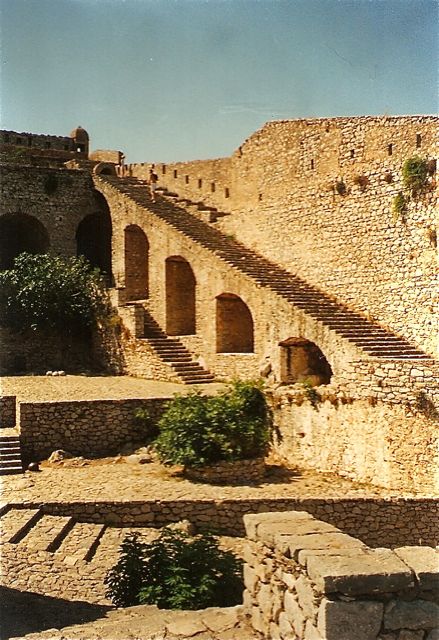
Zafeiris emphasizes a little-known aspect of the affair. The events surrounding the death of United Democratic Left (EDA) deputy Grigoris Lambrakis on May 22, 1963, are widely known.

If Polk transmitted the peaceful message of the rebels to the American public, it would put paid to the American dream of finally annihilating the communists.» Grigoris Lambrakis (1963).

Greece was destined to be a protectorate of American policy in the Balkans and a bastion of the ‘Western world’ against Russian and communist expansion. Polk’s activities at that time ran counter to American policy in Greece the US government did not want anyone making overtures of peace to the rebels and wanted the definitive expulsion of communists from Greece. As Zafeiris writes: «The most likely story is that Polk was murdered by the secret service, coordinated by Harvey Smith, military attache to the American Embassy in Athens, who traveled with him from Athens on the same plane and who set up a trap for him at the airport. But Mouzenidis had been killed on Mount Krousia a month before Polk set foot in Thessaloniki, while Vasvanas was proved to have been in Grammos. Adam Mouzenidis and Vangelis Vasvanas, KKE cadres who had fought in the civil war, were said to be the perpetrators. Who killed Polk and why? After much research, the most commonly held view is that the man arrested and sentenced for Polk’s death, the journalist Grigoris Staktopoulos, was framed because of his association with the Greek Communist party (KKE).

The news traveled the world instantly, causing a furor. The following day, Polk disappeared, and a week later his body was found floating in the Thermaic Gulf with a bullet in his skull. On May 7, George Polk, an American journalist from the CBS radio news network, arrived in the city with the intention of going into the mountains of Western Macedonia to meet Markos Vafeiadis, military chief of the communist rebels and prime minister of the so-called government of the mountains. Blood was flowing in Grammos, Vitsi and other mountainous parts of northwestern Greece, and Thessaloniki became a gathering place for Greeks and foreigners who were interested in developments on the front and in political events. In spring 1948, the drama of the Greek Civil War had reached its peak. The German rulers themselves wanted the pro-German successor Constantine, who identified with German policy in Greece, at the head of the Greek state.» The death of Schinas, who fell or was pushed out of a window at the military headquarters where he was being held, lent force to rumors and speculation about the real cause of the murder. «One version, considered more likely than the rest, has it that the king was the victim of German diplomacy given that George’s policy ran counter to German plans for the Balkans and Eastern Europe. But more persistent rumors spoke of a German plan to liquidate the pro-English king in order to promote German interests in Greece,» Zafeiris writes.

«Immediately after the murder, the city was in uproar and rumors offered by Greeks blamed the scapegoats of the time, the Turks and Bulgarians. It is reported that in a private conversation with the king’s widow, Queen Olga, he stated that he had acted alone, but most historians take the view that he acted on behalf of foreign interests in the Balkans that benefited from the king’s murder. The motive has never been revealed nor has Schinas’s testimony in depositions to authorities – a fire broke out on the steamship carrying them to Piraeus. On March 5, 1913, at the intersection of Vassilissis Olgas and Aghias Triadas streets, Alexandros Schinas, a misfit from Asvestohori, shot and killed King George I.


 0 kommentar(er)
0 kommentar(er)
